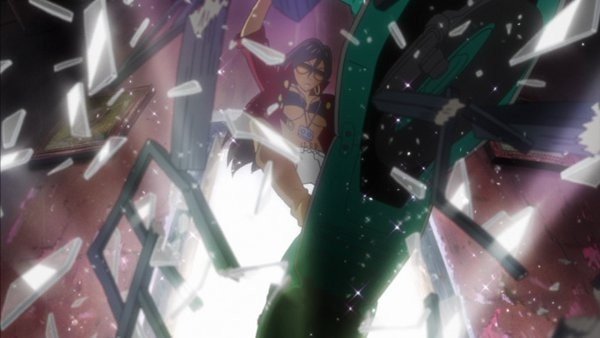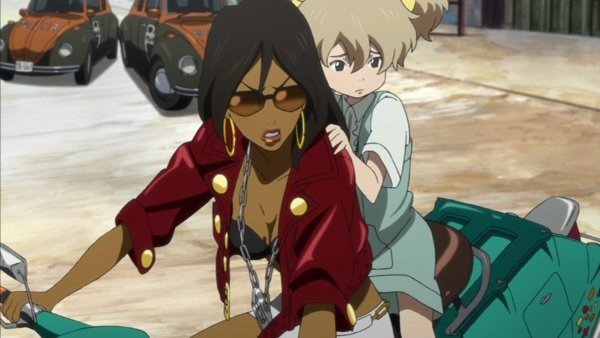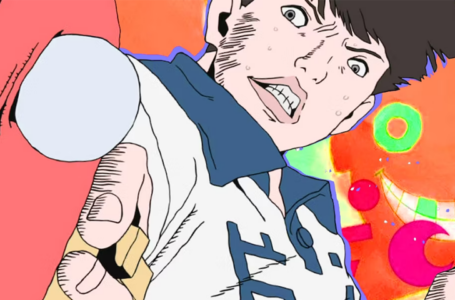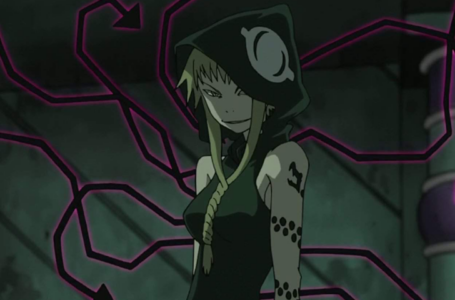Michiko and Hatchin Part 1 Review (Anime)
Jazz, action and fugitives? No, it’s not Cowboy Bebop, it’s one of Shinichirō Watanabe’s other produced works Michiko and Hatchin.
The first episode packed a real punch from the get-go, thrusting me into one of Michiko’s prison escape attempts with guards firing their guns at her, not caring if she’s dead long as she isn’t free. Most of the episode revolves around Hatchin and her abusive foster family; her step-siblings beat her and her parents show no affection towards her, and force her to make breakfast each morning and handle all of the household chores. It was brilliantly well done and I immediately wanted the best for poor Hatchin, and the worst for the abusive family who don’t deserve to be shown kindness. Michiko takes Hatchin away, and the adventure that follows shows the two of them escaping their given fates and forging their own paths.
Although Hatchin let her foster family walk over her, she’s a strong child who was waiting for a chance at a better life, and the foul-mouthed and violent Michiko rescued her believing that they may be related in some way; they both have a great relationship from the beginning where they play off of the others personalities, bringing out the best in each other. They fight their own fears and weaknesses together, and help each other deal with their pasts that follow them wherever they go; Michiko in particular has some personality issues to work on.
There are several unsettling moments in the series, especially in the favela (the series seems to be set in Brazil), where young children wield guns, are violent and regularly steal things; they’re brutal and merciless, and it’s both saddening and frustrating to see how they behave and are so willing to murder. There are multiple moments like this in the series, but it manages to keep a good sense of humour among its lively and energetic cast, and I love how sweet Michiko and Hatchin’s relationship is, and how neither of them are anywhere near perfect.
The visuals are brimming with detail, especially in the locales portrayed in Brazil which is an unusual setting for an anime, but the feeling it inspired in me was different because of it; everything looks warm and sunny, and I could only think of Summer. Michiko in particular looks great with her variety of outfits ranging from dresses to what might aswell just be underwear, but she manages to pull both off in the exotic venues; one thing I noticed was the focus on her lips and eyes, which always seemed to stand out – they might have been part of the reason as to why she’s part of a strange, somewhat out of place love affair later in the series, seemingly coming from nowhere.
There’s a fair bit of action to be seen, with the first episode having Michiko crashing into a house on a motorcycle and evading shotgun fire from its residents. There’s quite a few confrontations that take place during the series, with Michiko being a skilled fighter who resorts to violence first, and even Hatchin gets into a few battles of her own as she refuses to let anybody take advantage of her anymore. There’s nothing particularly graphic, although there are blood spatters.
MVM has included both English and Japanese voice-overs, but I opted for the English voice-over which is fantastic. There’s nobody I’m overly familiar with in the show, but Monica Rial and Jad Saxton’s (who’ve both shown up in several popualar works) portrayals as the shows titular characters are fun, spirited and a joy to listen to. Another interesting tidbit is that the two main characters are voiced by Yōko Maki (seen in The Grudge) and Suzuka Ohgo (seen in Memoirs of a Geisha), which may be a draw to fans of both of those successful movies. Alexandre Kassin composed the music, who’s part of a Brazilian band, to create fitting and authentic music for the shows setting.
I’m starting to feel as if Watanabe, despite his work on some of the most revered anime, can only work with bounty hunters and vigilantes. Michiko and Hatchin stands out due to its unique setting and it’s great relationship building between the main cast, and it definitely feels like a Watanabe work even if he didn’t pen the script. Watanabe plays to his strengths and manages to create something that feels different to his previous works each and every time, even if the similarities are striking, and so there’s no complaints from me that Watanabe knows what he’s good at.
Part 1 is 11 episodes long, and it’s a well-paced and exciting show where none of the characters are specially likeable, at least not initially, and are rough around the edges, but I respect them for their flaws and am enjoying seeing them grow. Part 1 ends at a good spot with no huge cliffhanger to worry about, but Part 2 releases next month anyway so there’s no long wait. Michiko and Hatchin is well worth a watch, although if you haven’t enjoyed Watanabe’s other works then you’ll likely not enjoy this either.
- Super Mario Odyssey Celebrates its One Year Anniversary - October 28, 2018
- Dragon Ball Z KAI Final Chapters Review (Anime) - October 28, 2018
- Resident Evil 2 Remake Gets a Steelbook Edition in Europe - October 24, 2018







